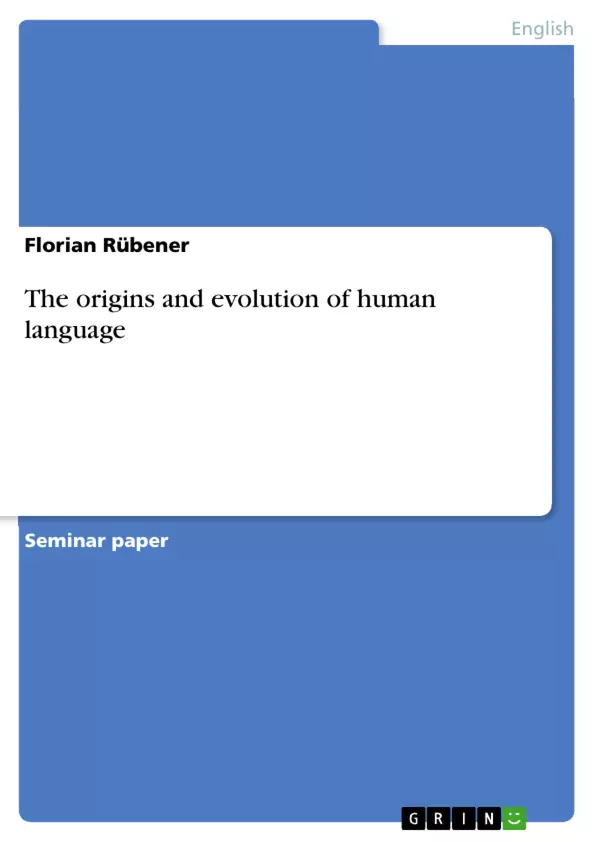The origins and evolution of human language
Overview
Introduction
The natural-sound source
bow-wow theory
pooh-pooh theory
yo-heave-ho heory
The oral-gesture source
Glossogenetics
Conclusion
References
Introduction
No other species has anything resembling the human language and it seems like there is no other communication system that could possibly match human language in flexibility, capacity and diversity.
But when did humans develop language? We will probably never know as spoken language leaves no traces in the historic record. Although the ultimate origin of language is likely to remain unknown several scientific approaches have been made that lead to various theories concerning the developement of human language.
- Quote paper
- Florian Rübener (Author), 2006, The origins and evolution of human language, Munich, GRIN Verlag, https://www.grin.com/document/163975



